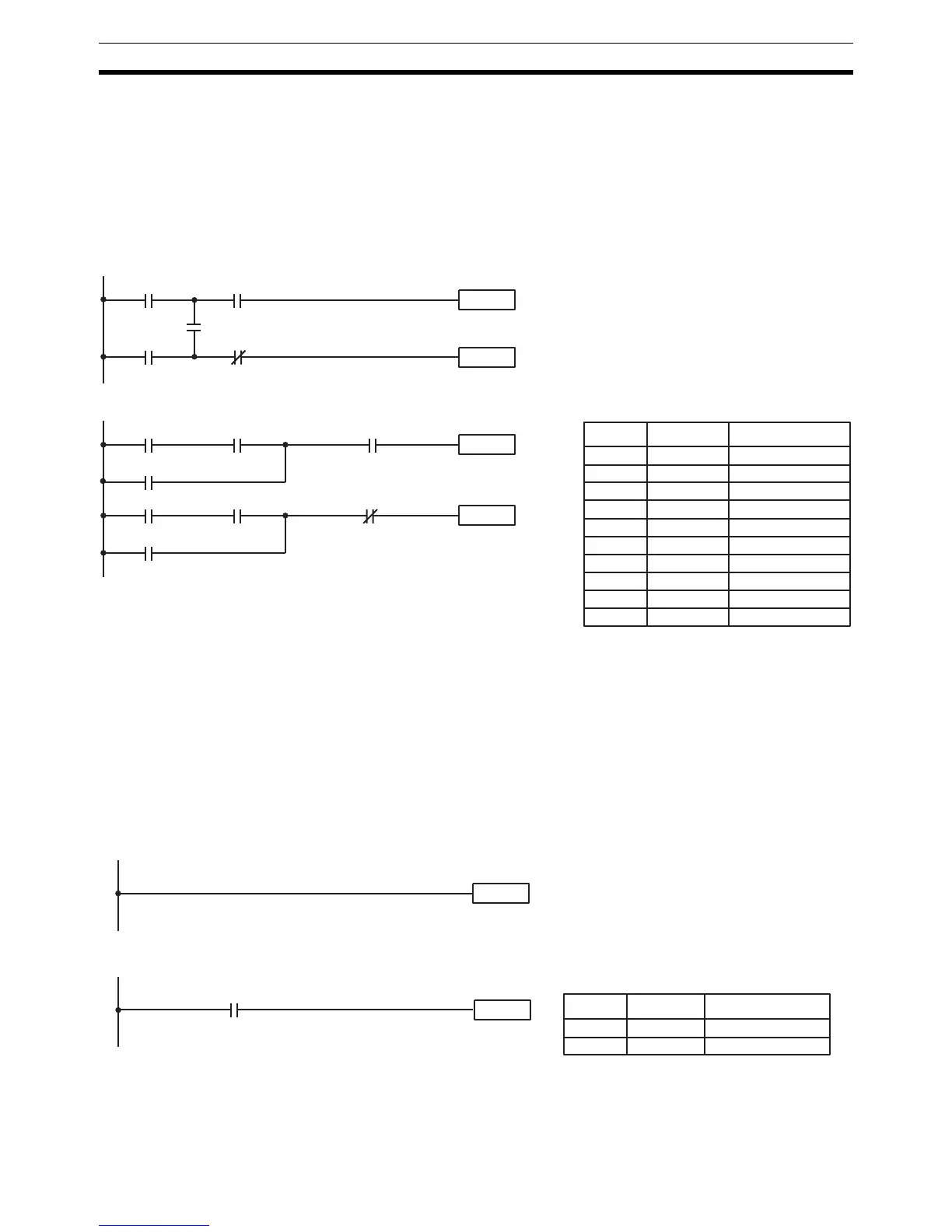204
Programming Precautions Section 4-6
4-6 Programming Precautions
The number of conditions that can be used in series or parallel is unlimited as
long as the memory capacity of the PC is not exceeded. Therefore, use as
many conditions as required to draw a clear diagram. Although very compli-
cated diagrams can be drawn with instruction lines, there must not be any
conditions on lines running vertically between two other instruction lines. Dia-
gram A shown below, for example, is not possible, and should be drawn as
diagram B. Mnemonic code is provided for diagram B only; coding diagram A
would be impossible.
The number of times any particular bit can be assigned to conditions is not
limited, so use them as many times as required to simplify your program.
Often, complicated programs are the result of attempts to reduce the number
of times a bit is used.
Except for instructions for which conditions are not allowed (e.g., INTERLOCK
CLEAR and JUMP END, see below), every instruction line must also have at
least one condition on it to determine the execution condition for the instruc-
tion at the right. Again, diagram A, below, must be drawn as diagram B. If an
instruction must be continuously executed (e.g., if an output must always be
kept ON while the program is being executed), the Always ON Flag (SR
25313) in the SR area can be used.
Instruction 2
Instruction 1
00002
00003
00000
00001
00004
Diagram A: Not Programmable
Instruction 1
00004
00003
00000
00001
Diagram B: Correct Version
00002
Instruction 2
0000400000
00001
Address Instruction Operands
00000 LD 00001
00001 AND 00004
00002 OR 00000
00003 AND 00002
00004 Instruction 1
00005 LD 00000
00006 AND 00004
00007 OR 00001
00008 AND NOT 00003
00009 Instruction 2
Instruction
25313
Instruction
Diagram A: Not Programmable for Most Instructions
Diagram B: Correct Version
Address Instruction Operands
00000 LD 25313
00001 Instruction

